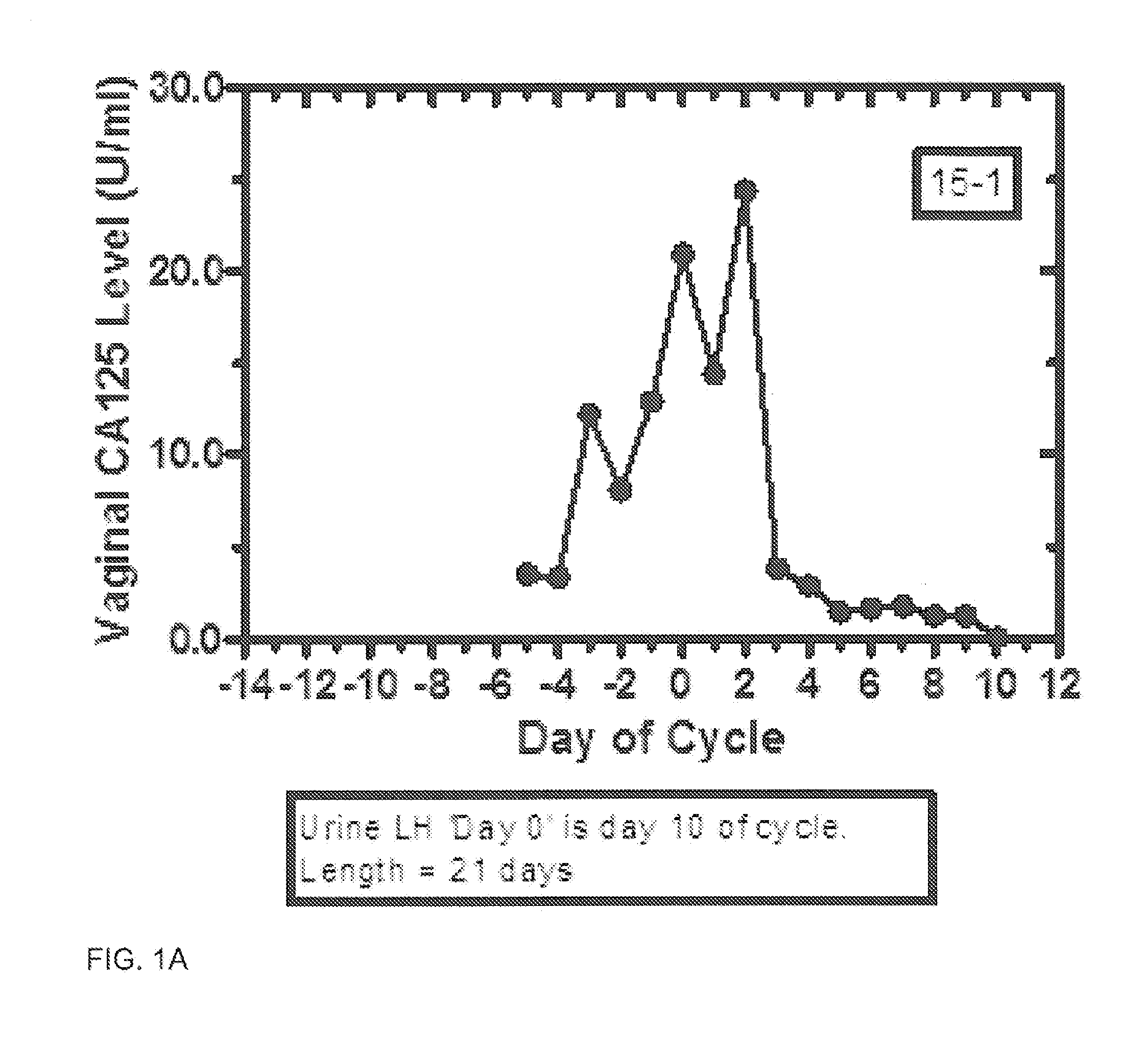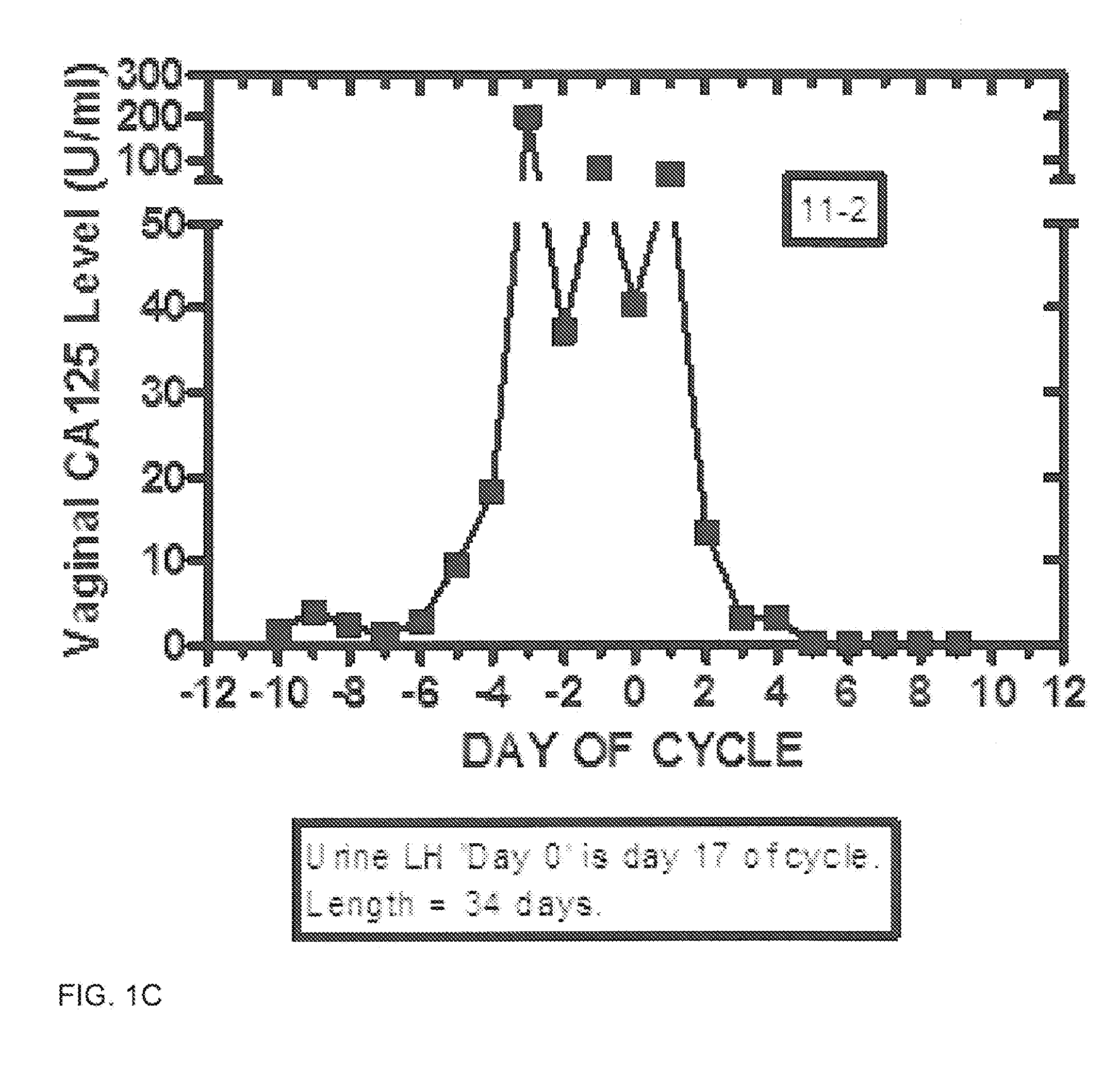Methods and kit system for assessing fertility with vaginal CA125/MUC16 levels
a kit system and fertility level technology, applied in the field of apparatus and methods for assessing female mammalian fertility levels, can solve the problems of unsatisfactory observational methods, inability to accurately and reliably predict the fertility of women, and the inability to have unintended pregnancy
- Summary
- Abstract
- Description
- Claims
- Application Information
AI Technical Summary
Benefits of technology
Problems solved by technology
Method used
Image
Examples
Embodiment Construction
[0033]Generally disclosed is a method of assessing the fertility of a female subject via measurement of vaginal CA125 / MUC16 levels. According to a preferred embodiment method, fertility is assessed via:[0034](1) establishing a normal pattern of vaginal CA125 / MUC16 levels over a typical ovulatory cycle (e.g., from a study of multiple women) (This is to determine the day-specific levels of vaginal CA125 / MUC16 as a function of time-of-cycle as indexed to an indicator of the day of ovulation);[0035](2) collecting a swab of vaginal epithelial and fluid from the distal vagina near the vaginal orifice (distinct from cervical mucus) of the subject;[0036](3) measuring the CA125 / MUC16 level in the swab; and[0037](4) determining the time-of-cycle (period of potential fertility versus days of maximum fertility versus infertile luteal days), based on the measured vaginal CA125 level and knowledge of the normal vaginal CA125 signature.
[0038]FIGS. 1A through C are useful for illustrating the step ...
PUM
 Login to View More
Login to View More Abstract
Description
Claims
Application Information
 Login to View More
Login to View More - R&D
- Intellectual Property
- Life Sciences
- Materials
- Tech Scout
- Unparalleled Data Quality
- Higher Quality Content
- 60% Fewer Hallucinations
Browse by: Latest US Patents, China's latest patents, Technical Efficacy Thesaurus, Application Domain, Technology Topic, Popular Technical Reports.
© 2025 PatSnap. All rights reserved.Legal|Privacy policy|Modern Slavery Act Transparency Statement|Sitemap|About US| Contact US: help@patsnap.com



